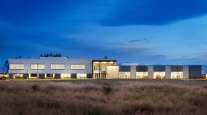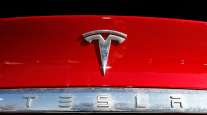Opinion: Driverless Cars May Make Traffic Worse, Not Better

One of the more puzzling questions arising from the revolution in autonomous vehicles and on-demand services is what impact it will all have on cities.
Optimists predict that autonomous vehicles operating in on-demand fleets will greatly reduce traffic congestion, lower the need for parking lots and garages, and create new mobility options for poor and low-income people.
But in this contested terrain, just as many skeptics predict the driverless future will mean more traffic congestion, more need for parking, and fewer options for poor and needy.
These dueling forecasts pose crucial concerns for the health and safety of cities. Urbanized areas are home to most of America’s population and the greater share of the nation’s economic activity. What happens to urban transportation networks matters a lot, impacting the lives of tens of millions of people.
Poor planning in the past century — bulldozing highways through urban neighborhoods, and failing to charge drivers for contributing to air pollution, among others — burdened cities ever since with massive traffic jams, air pollution, deaths and injuries from accidents, among other problems. The question now: Can urban planners and civic leaders avoid making the same mistakes again?
Here are some of the main concerns:
Most forecasters agree that driverless fleets will encourage people to use on-demand services instead of owning a car. It’s possible that could reduce the total number of vehicle miles driven.

Getty Images
But the ease of dozing through a morning commute or otherwise not paying attention to the task of controlling a car may prove so enticing as to promote longer or more frequent trips — keeping vehicles on the road more, not less. Avoiding all the usual pains of driving, such as looking for parking, would further encourage more and longer trips, not less driving.
And if all those trips mirror the way most traditional vehicles operate now — with a single occupant rather than in carpools — that, too, could produce more vehicles on the road more of the time, adding to traffic jams.
If driverless cars become cheaper to use per trip than taking the bus or streetcar, that could put more people in autonomous vehicles, further clogging the roads.
If demand for public transit collapses, then the people who really rely on it the most, poor and working class people, may find even fewer ways to get around, leading to greater hardship.
How to avoid all the ill effects? Policy, pricing and regulations will be key.
First, public policy must encourage more people to use fewer vehicles. One idea is to design taxi-like autonomous vehicles with separate compartments for each passenger — in effect two people sharing a cab — with the computer calculating the most efficient route.
Policymakers also could design taxes and fees that favor driverless shuttles and buses over cars with single occupants.
Pricing is crucial in getting the right outcome. Technology soon will allow an unprecedented ability to monitor all sorts of data: the length of trips, the number of occupants, time of day and so much more. This vast trove of data can be used to design pricing strategy to achieve a goal of less congestion. That in turn would reduce pollution and save lives.
Congestion pricing schemes already in use in a few foreign cities — London, Stockholm, Singapore — charge more for vehicles operated during rush hour or in downtown or highway locations prone to congestion. Seattle and New York are thinking about it. We should see more of that.
Regulators might also nudge on-demand fleets to emphasize the use of driverless vehicles as “last mile” links with public transit. A 20-mile commute taken mostly in public transportation but finished off with a quick driverless link to final destination would greatly reduce traffic jams and pollution.
And there could be a “zero passenger” penalty to discourage driverless cars from “deadheading” or riding around empty while waiting for another passenger.
Will policymakers be willing to engage in such engineering? Or will they be frightened off by accusations of “Big Brother” getting in they way of what so many American see as a right to drive and park a vehicle as they please?
I don’t know the answer. But let me once again quote famed architecture critic Lewis Mumford, who observed in 1958: “The current American way of life is founded not just on motor transportation but on the religion of the motorcar, and the sacrifices that people are prepared to make for this religion stand outside the realm of rational criticism.”
Distributed by Tribune Content Agency, LLC




